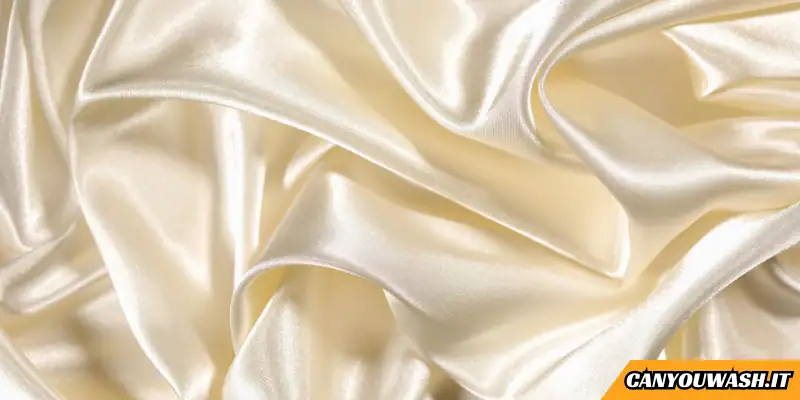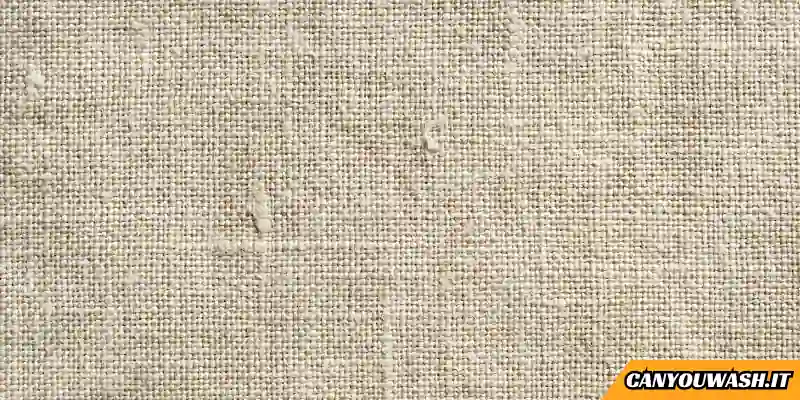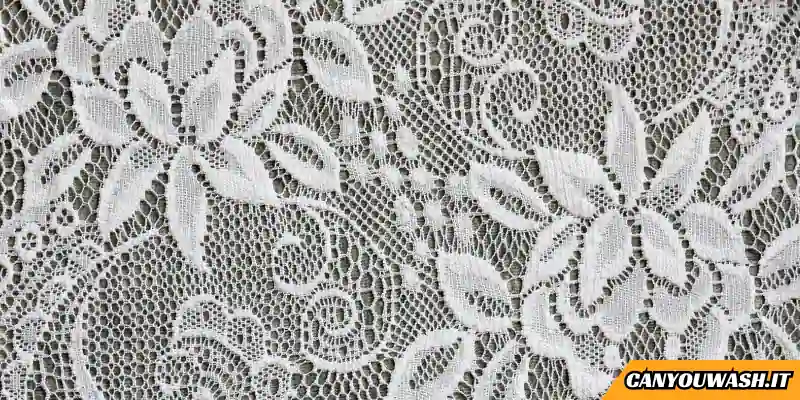Quickly find out how to care about:
In the world of fashion and textiles, delicate and sensitive fabrics require special care to maintain their beauty and longevity. From luxurious silk to cozy wool, and from delicate lace to elegant satin, each fabric comes with its own set of care instructions.
In this article, we will explore the characteristics of these special fabrics and provide valuable tips for their proper care.
So, let’s dive into the world of delicate fabric care and learn how to keep your special pieces looking their best!
What Are Delicate and Sensitive Fabrics?
Delicate and sensitive fabrics require special care and attention to maintain their quality and appearance over time.
These fabrics, including silk, lace, chiffon, and cashmere, are susceptible to damage from harsh washing techniques, high temperatures, and abrasive chemicals.
It is crucial to utilize gentle detergents, hand washing, or the delicate cycle on the washing machine to ensure their preservation.
Air-drying or using low heat settings in the dryer can help evade stretching or shrinking.
Ignoring these special care procedures can result in fabric distortion, color fading, and reduced durability, ultimately diminishing the garment’s lifespan and aesthetic appeal.
General Tips for Caring for Special Fabrics
Tip 1
Read Care Labels
Always read care labels for valuable instructions on delicate fabrics, including washing temperatures, drying methods, and ironing instructions.
Tip 2
Use Gentle Detergent
Choose a detergent specifically for delicate fabrics to preserve softness and color. Avoid harsh chemicals like bleach and fabric softeners.
Tip 3
Hand Wash or Delicate Cycle
For delicate fabrics, hand washing or using a delicate cycle in the washing machine is advisable. This minimizes the risk of damage and maintains fabric integrity.
Tip 4
Cold Water Washing
Opt for cold water to prevent color fading and minimize the risk of shrinkage or damage. Cold water is especially beneficial for fabrics like silk, wool, or lace.
Tip 5
Gentle Handling
Hand washing provides individual attention to each garment, ensuring meticulous care. Delicate cycles in washing machines mimic this process, reducing the risk of harsh treatment.
Tip 6
Use Environmentally Friendly Cold Water
Cold water washing is environmentally friendly, energy-efficient, and ideal for delicate fabrics. It minimizes the impact on the environment while caring for your special fabrics.
Tip 7
Avoid Bleach and Harsh Chemicals
Steer clear of bleach and harsh chemicals to prevent discoloration, weakening of fibers, and overall damage to delicate fabrics. Opt for fabric-specific detergents to ensure longevity and maintain quality.
By following these concise tips, you can effectively care for your special fabrics, ensuring longevity and preserving their original beauty.
Specific Tips for Caring for Different Fabrics
Caring for various fabrics requires specific steps to ensure their preservation, taking into account their unique properties and characteristics. Follow these tips to maintain the quality of different fabrics:
Silk: Hand Wash in Cold Water with Mild Detergent

Tip 1
Hand Wash
Delicately hand wash silk garments in cold water using a mild detergent.
Tip 2
Avoid Twisting
After washing, gently press out excess water with a clean towel, avoiding any twisting or wringing.
Tip 3
Air Dry
Air dry silk garments away from direct sunlight and heat to prevent brittleness.
Tip 4
Stubborn Stains
Consult a professional cleaner for stubborn stains on silk items.
Wool: Hand Wash in Cold Water or Dry Clean Only

Tip 1
Hand Wash or Dry Clean
Hand wash wool garments in cold water with a gentle detergent or opt for dry cleaning.
Tip 2
Preserve Resilience
Hand washing preserves wool fibers’ integrity, ensuring gentle cleaning without harsh agitation.
Tip 3
Care Labels
Refer to care labels for specific instructions on maintenance and longevity.
Cashmere: Hand Wash in Cold Water with Wool Detergent

Tip 1
Use Wool Detergent
Hand wash cashmere in cold water with a wool-specific detergent to prevent pilling.
Tip 2
Gentle Agitation
Gently agitate in soapy water, then carefully press out excess water without wringing.
Tip 3
Reshape and Air Dry
Lay flat on a towel, reshape to original dimensions, and air dry away from direct sunlight.
Linen: Machine Wash on Gentle Cycle with Cold Water

Tip 1
Machine Wash
Launder linen garments in a machine using a gentle cycle and cold water.
Tip 2
Mild Detergent
Use a mild detergent for delicate fabrics, avoiding bleach or fabric softeners.
Tip 3
Separate from Heavier Fabrics
Prevent abrasion by separating linen items from heavier fabrics during washing.
Tip 4
Reshape and Air Dry
Gently reshape garments and air-dry to maintain shape and quality.
Lace: Hand Wash in Cold Water with Gentle Detergent

Tip 1
Gentle Hand Wash
Hand wash lace items in cold water using a mild detergent to preserve intricate patterns.
Tip 2
Handle with Care
Avoid harsh washing methods to prevent snagging or tearing.
Tip 3
Avoid Wringing
Refrain from wringing or twisting lace items to prevent damage to delicate fibers.
Satin: Hand Wash in Cold Water with Mild Detergent

Tip 1
Careful Hand Wash
Hand wash satin garments in cold water with a mild detergent to protect their smooth surface.
Tip 2
Avoid Harsh Chemicals
Refrain from using harsh chemicals or bleaching agents to prevent discoloration.
Tip 3
Excess Water Removal
Gently squeeze out excess water without wringing to maintain fabric elasticity.
Tip 4
Air Dry Away from Sunlight
Lay flat to air-dry away from direct sunlight and heat to maintain luster and shape.
Chiffon: Hand Wash in Cold Water with Delicate Detergent

Tip 1
Meticulous Hand Wash
Hand wash chiffon items in cold water using a delicate detergent for sheer and lightweight preservation.
Tip 2
Avoid Rubbing or Wringing
Do not rub or wring the delicate fabric to prevent damage.
Tip 3
Rinse and Press
Rinse in cold water, press out excess water gently, and lay flat to air dry.
Stain Removal Tips for Special Fabrics
Effectively removing stains from special fabrics requires precise treatment and the use of appropriate stain removal techniques to avoid causing damage or discoloration. Follow these tips for stain removal on delicate fabrics:
Blot, Don’t Rub
Tip 1
Blotting Technique
Begin by blotting the stained area with a clean cloth or paper towel to absorb as much of the spill as possible.
Tip 2
Choose the Right Stain Remover
Select a stain remover specifically designed for delicate fabrics. Test it on a small, inconspicuous area before application to avoid adverse reactions.
Tip 3
Follow Laundering Instructions
Always follow the manufacturer’s laundering instructions to maintain the quality of delicate fabrics.
Tip 4
Gentle Blotting
When addressing stains on delicate fabrics, gently blot the affected area instead of rubbing to prevent spreading or fiber damage.
Tip 5
Non-Abrasive Approach
Patience is key; the non-abrasive method of blotting is particularly effective for fabrics like silk or lace, where vigorous rubbing could lead to permanent damage.
Use a Stain Remover Designed for Delicates
Tip 1
Select Specialized Stain Remover
Choose a stain remover formulated for delicate fabrics such as silk, lace, and chiffon.
Tip 2
Preserve Fabric Integrity
Specialized stain removers target tough stains while being gentle on delicate fabrics, ensuring stains are lifted without causing damage.
Tip 3
Maintain Quality
Using these products helps maintain the fabric’s texture and color, ensuring your delicate garments remain in pristine condition for an extended period.
Test a Small Area First
Tip 1
Patch Test
Before treating a stain on delicate fabrics, conduct a patch test in an inconspicuous area to ensure compatibility and prevent potential damage.
Tip 2
Prevent Adverse Effects
Delicate fabrics like silk, lace, and chiffon require gentle handling. A patch test prevents adverse effects such as discoloration, fabric distortion, or weakening.
Tip 3
Mindful Approach
Align with best practices in fabric care and laundry techniques by adopting a responsible and cautious treatment of delicate textiles.
Rinse Thoroughly
Tip 1
After Treatment
Thoroughly rinse stained delicate fabrics to remove residual cleaning agents and prevent potential discoloration or damage.
Tip 2
Prevent Chemical Residue
Proper rinsing ensures no chemical residues remain, preventing fiber degradation over time.
Tip 3
Maintain Texture and Color
Thorough rinsing helps in maintaining the texture and color of delicate fabrics, preserving their original beauty and quality.
Air Dry or Lay Flat to Dry
Tip 1
Choose Gentle Drying Methods
When drying stained delicate fabrics, air dry or lay them flat to ensure natural drying without potential distortions or damage.
Tip 2
Maintain Structural Integrity
Air drying prevents stretching or misshaping, maintaining the structural integrity of delicate fabrics like silk, lace, or chiffon.
Tip 3
Preserve Delicate Nature
Gentle drying methods contribute to long-term fabric care, preserving the delicate nature of the fabric and extending its lifespan.
Final thoughts 💭
In wrapping up our guide about taking care of special fabrics, it’s clear that washing delicate clothes needs a bit of care and know-how. Use the tips we’ve talked about to keep your silk, lace, and chiffon clothes looking great.
By following these suggestions, you’ll make your laundry routine better, and you won’t have to worry about your clothes getting damaged or losing color. Your closet will be happy you gave it that extra bit of attention!





Leave a Reply